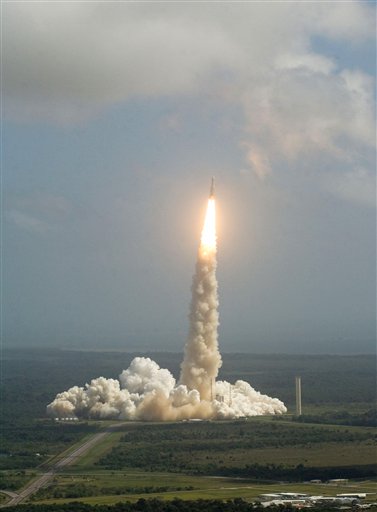Science news in brief
24-May-2009
The week in Real Science
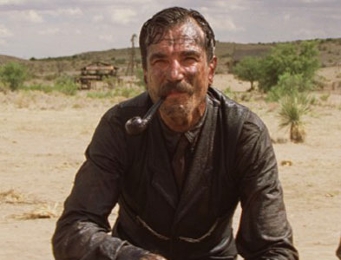
The research below, chosen from hundreds of papers published in the past fortnight, ranges from what cosmic rays do to clouds to what people do to dogs - and why much of this is a bad idea. Take a look:
10 May 2009 Oil and alternatives
"We should step away from the all-or-nothing debate on fossil fuels vs. renewables, they said, stop demonizing any of our potential energy sources, and get serious about addressing our energy problem before it’s too late. But in the next breath ... I heard them discount the potential of wind and solar... I heard overblown claims about how technology will continually increase reserves, and how offshore drilling in America could solve our problems if only they were allowed to do it.
11 May 2009 "No link cloud coverage - global warming"
Climate change sceptics say the sun is the main cause of global warming not greenhouse gases. One way this can happen is through the effect of solar activity on cosmic rays and hence on cloud cover. New research shows that the effect is 100 times too small to affect the climate.
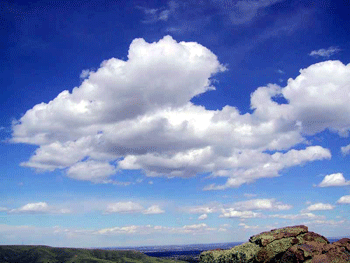
14 May 2009 Herschel and Planck launch
ESA’s Herschel and Planck satellites successfully launched into space, where they will start collecting the most detailed information yet about the birth and evolution of our Universe and its galaxies. After a successful lift off from Kourou, Herschel was successfully ejected from the upper-stage of the rocket, closely followed by Planck. Both satellites are now on their separate journeys to their final orbits, within a position in space known as the second Lagrangian point.
15 May 2009 Hubble gyros fixed after struggle
Astronauts have completed the most critical repair to the Hubble Space Telescope after a long struggle. Mission specialists Mike Good and Mike Massimino put a refurbished pair of gyroscopes into the telescope after a new set refused to go in.
17 May 2009 First observations of biological particles in high-altitude clouds
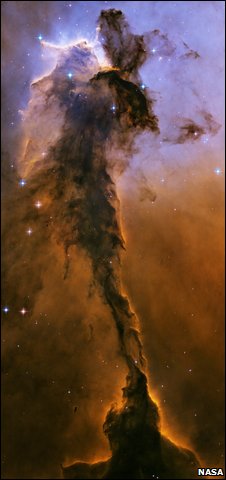
A team of atmospheric chemists has moved closer to the first direct detection of biological particles in ice clouds. The team sampled water droplet and ice crystal residues at high speeds while flying through clouds in the skies over Wyoming. Analysis of the ice crystals revealed that the particles that started their growth were made up almost entirely of either dust or biological material such as bacteria, fungal spores and plant material. While it has long been known that microorganisms become airborne and travel great distances, this study is the first to yield direct data on how they work to influence cloud formation.
19 May 2009 Climate change odds much worse than thought
The most comprehensive modelling yet done on how much hotter the Earth's climate will get shows that without rapid and massive action, the problem will be about twice as severe as estimated six years ago - and could be even worse than that.
21 May 2009 Dog training makes them worse
A new study shows how the behaviour of dogs has been misunderstood for generations: in fact using misplaced ideas about dog behaviour and training is likely to cause rather than cure unwanted behaviour. The findings challenge many of the dominance related interpretations of behaviour and training techniques suggested by some TV dog trainers.
22 May 2009 Top 10 new species
On the list are a pea-sized seahorse, caffeine-free coffee and bacteria that live in hairspray. The top 10 also includes the very tiny (a snake just a slither longer than 4 inches or 104 millimeters), the very long (an insect from Malaysia with an overall length of 22.3 inches or 56.7 centimeters) the very old (a fossilized specimen of the oldest known live-bearing vertebrate) and the very twisted (a snail whose shell twists around four axes). Rounding out this year's list are a palm that flowers itself to death, a ghost slug from Wales and a deep blue damselfish.
Education resources, classroom activities, cool stuff
Clouds and global warming
Cosmic rays, clouds and climate
Global indirect aerosol effects: a review
Uncertainty in global CCN concentrations
Global warming at Stanford University
Particles in clouds
Dominance and dogs
Energy
How to Profit from Energy Illiteracy
Report of the World Commission on Environment and Development: Our Common Future
The Secretary of Synthetic Biology
Sustainable homes
Transcript of 24 May 2009 podcast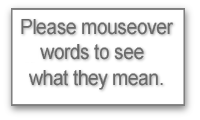
True Grit
Hello again and welcome to the Real Science review of the week – or in this case the fortnight, as I was away last weekend.
I've tried to keep the number of stories down, so we don't have twice as many as usual. But even so there's a fair bit to talk about - though I'll try to keep it to 5 minutes or so.
First have a listen to this.
So what's that dialogue from True Grit got to do with Real Science? Well the words popped into my head when I was reading some of the heated debate – if you can call it that – generated by the worst piece of science communication I've seen this year.
By writing an eye-grabbing headline that went round the world and way beyond the facts, a press officer at Carnegie Mellon University pandered to all the prejudices of the good ol' climate change deniers.
While I'm trying to get over the stupidity of the scientists who allowed that to happen, I'll tell you a wee bit about the other interesting science news this week.
Space scientists
Take a look at Herschel and Planck.
Herschel – the largest space telescope ever launched – will give astronomers their best view yet of the universe at far-infrared and sub-millimetre wavelengths, "peering through obscuring clouds of dust to look at the early stages of star birth and galaxy formation."
Planck will map the structure of the cosmic microwave background, the radiation still zipping around the universe from the Big Bang. The sensitivity of its measurements, ESA says, will "help determine fundamental parameters relating to the origin and evolution of the universe."
All good stuff. But while the European Space Agency website is strong on detail for scientists, it's not so hot on material suitable for schools. There isn't much active learning stuff there, and pdf files and videos without voiceover don't inspire kids in the classroom. So come on ESA – start talking to the next generation and not just your own.
Dog story
Now how many of you share your home with one of the 8 million dogs in the UK (according to the pet food manufacturers' association). Our own little terrier mixture recently came to the end of a long, happy life, contentedly munching a packet of Revels. Scruffy had the sweetest face you ever saw – and the smelliest farts that ever drove you from the room.
We miss her. She was lovely but untrainable – not that we tried very hard because it made her unhappy.
Now new research from the University of Bristol has shown that Scruffy was not alone, because "the behaviour of dogs has been misunderstood for generations". Using accepted ideas about dog training, the scientists say, is likely to "cause rather than cure unwanted behaviour."
So that's one up for the "it's-making-Scruffy-unhappy-so-let's-stop-doing-it school of dog training.
"Techniques such as pinning the dog to the floor, grabbing jowls or blasting hooters at dogs will make them anxious and potentially lead to an escalation of aggression," say the scientists.
Kids and canines
Eh … yeah. But what kind of twat does that stuff to a dog anyway? Quite a lot of people apparently, because dog trainers tell them to. So here's a piece of advice to anyone tempted to do something because an "expert" says they should:
Ask yourself if it makes sense. Then take a long look into the animal's eyes and feel what's there. It's another speck of consciousness, just like yours. If you would feel pain when someone did it to you, don't do it to the dog.
The same principle works in teaching and parenting. Forget the experts on behaviour. Look into the kids' eyes. Feel what they feel. And if what you're being told to do to them would hurt if it was done to you – DON'T DO IT.
OK we'd better get back to the disastrous press release before we run out of time. Unfortunately I'm in a bad mood now. Fortunately we've only a couple of minutes left. Time enough though to look at what's wrong with this headline:
No link between cloud coverage and global warming.
Bad science?
If you search on those words today 24 May 2009 you get 210,000 hits, and by following them can tune into some of the comments made:
"So by extension the sun has no influence on earth's temperature."
"Oh my, sad to see "scientists" resorting to simulation and modelling as a proof."
"Must be the steady barrage of hot air forced upon us by those who have bought into the pseudo scientific cult of man-made global warming."
You can find more in this vein at our first link, as well as calmer counsels trying to explain what the research really showed, as opposed to what the headline claimed it did.
I wouldn't have the energy or motivation. It's a dilemma for scientists and science communicators. Do we engage with the climate change deniers and rebut each point they make? And so confer some respectability on their position?
Or do we take the True Grit "You've done nothing when you've bested a fool." approach? And give the impression that we can't?
Bad communication
I don't know what the answer is in general. But I do know that with a little effort this time there would have been no need to find one.
As one of the deniers says: "If the claim isn't what the title says, then people should learn to carefully title their research."
Spot-on pal. Even a stopped clock gets it right twice a day.
So who's to blame for adding more fuel to the climate change fires? Is it the press officer who wrote the press release and started the stushie? No, because almost certainly she is some young graduate who is overworked, underpaid and unsupervised.
Responsibility rests with Carnegie Mellon for getting someone who doesn't understand the science or the politics to write their press releases. The scientists are also at fault because they can't be bothered to check those press releases. And the science communication websites should be blamed for reproducing word for word a muddled press release and a false headline.
Since this is a science communication website I'll now give you a very brief summary of what the research is really all about.
Real cosmic rays
As I've said before to get at the real science in a story ask yourself what you don't understand. In this case it's how cosmic rays, which are mainly high energy protons from space, can influence our climate, given that the total energy they carry is tiny – about the same as hits the earth in starlight.
Well clouds cool the Earth by reflecting sunlight back into space. So fewer clouds means a warmer Earth. Scientists have reported an observed correlation between cosmic rays and cloud cover. They also report a fall of about 15% in the number of cosmic rays over the 20th century. Taken together these observations could explain a big chunk of the global warming we've been seeing.
Two questions: What caused the reduction in cosmic rays hitting the Earth? And how can they affect clouds?
We know the answer to the first one: The solar wind carries a magnetic field that helps shield the Earth from cosmic rays, so when the this wind increases fewer cosmic rays hit our atmosphere.
So here's the chain of events if the correlation between cosmic rays and cloud cover is real and is cause-and-effect:
1. increased solar activity ⇒ 2. more solar wind ⇒ 3. greater magnetic field near the Earth ⇒ 4. fewer cosmic rays hitting Earth's atmosphere ⇒ 5. less cloud cover ⇒ 6. global warming.
All these links are well understood except for 4⇒5. So how do cosmic rays affect the formation of clouds?
Two mechanisms have been suggested. They're called the ion-aerosol clear air mechanism and the ion-aerosol near cloud mechanism.
Real science
Now what the new research has done is to use a mathematical model of the physics as presently understood to show that in the first of these mechanisms large changes in the solar wind, and hence the cosmic rays hitting Earth, result in very small changes in cloud cover.
So this new research rules out one explanation for the correlation between cosmic rays and cloud cover, if there is one. It leaves us still looking for a mechanism to explain 4 to 5. But those who don't believe climate change is caused by humans and instead blame the variability of the sun for global warming suggest three main ways this can happen – only one of which is this cosmic ray connection.
Bottom line? It's an interesting piece of research that aids our understanding. If the model is a good one and the results can be reproduced then one possible way for global warming to be caused by the sun has been ruled out. But there is no way this research supports the headline: No link cloud coverage and global warming.
Scientists may have ruled out one possible link between the sun and global warming is a much less snappy headline. But it's a lot more accurate.
The mismatch between headline and content has given the deniers more ammunition for their "global warming is a global conspiracy" theory.
So come on guys. Take the time to check the press releases your organisation sends out to journalists, because few of them are able to unravel the science, and big headlines that are wrong make it much harder to get real science across to real people.
That's all for this week from Real Science.
Keep thinking, keep asking those questions and go watch the rest of True Grit. It's a cracking film.
More help with words
aggressive, atmosphere, average, electric charge, attract, repel, electromagnetic radiation, fundamental, journalist, media, particle


